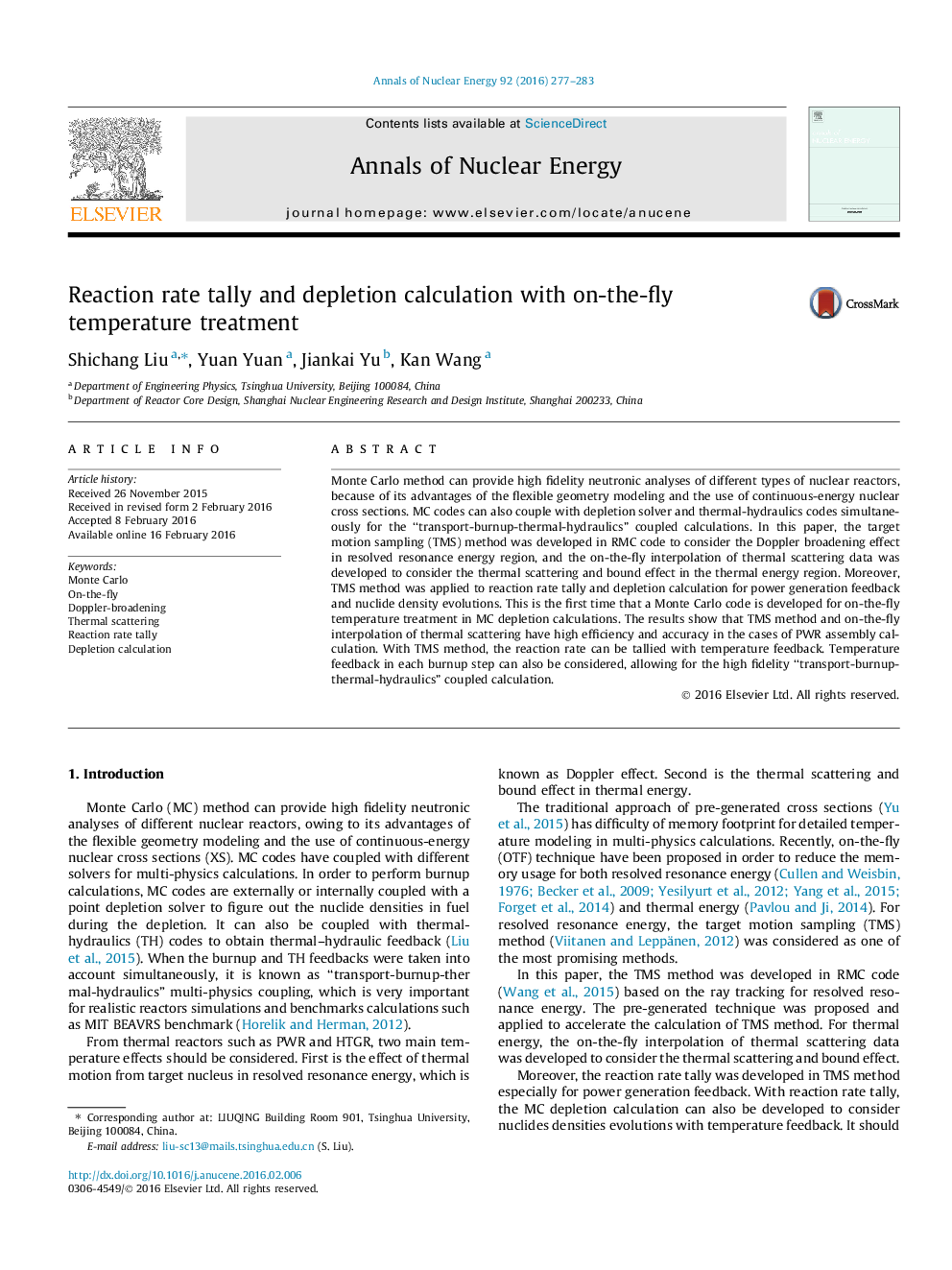| Article ID | Journal | Published Year | Pages | File Type |
|---|---|---|---|---|
| 1727880 | Annals of Nuclear Energy | 2016 | 7 Pages |
•TMS was developed in RMC based on ray tracking for on-the-fly Doppler-broadening.•On-the-fly interpolation was developed for bound nuclides in thermal energy region.•TMS method was applied to reaction rate tally to consider temperature feedback.•On-the-fly temperature treatment was applied to MC depletion in the first time.•RMC is capable of transport-burnup-thermal-hydraulics coupling for thermal reactors.
Monte Carlo method can provide high fidelity neutronic analyses of different types of nuclear reactors, because of its advantages of the flexible geometry modeling and the use of continuous-energy nuclear cross sections. MC codes can also couple with depletion solver and thermal-hydraulics codes simultaneously for the “transport-burnup-thermal-hydraulics” coupled calculations. In this paper, the target motion sampling (TMS) method was developed in RMC code to consider the Doppler broadening effect in resolved resonance energy region, and the on-the-fly interpolation of thermal scattering data was developed to consider the thermal scattering and bound effect in the thermal energy region. Moreover, TMS method was applied to reaction rate tally and depletion calculation for power generation feedback and nuclide density evolutions. This is the first time that a Monte Carlo code is developed for on-the-fly temperature treatment in MC depletion calculations. The results show that TMS method and on-the-fly interpolation of thermal scattering have high efficiency and accuracy in the cases of PWR assembly calculation. With TMS method, the reaction rate can be tallied with temperature feedback. Temperature feedback in each burnup step can also be considered, allowing for the high fidelity “transport-burnup-thermal-hydraulics” coupled calculation.
